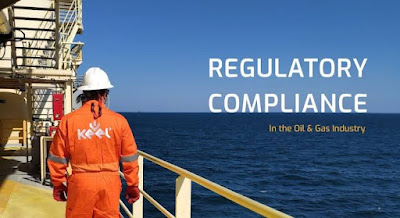Carbon Capture and Storage (CCS) in the Oil and Gas Sector:
Carbon Capture and Storage (CCS) in the Oil and Gas Sector:** Investigating strategies to capture and store carbon emissions to reduce the industry's carbon footprint.
Positively, I can assist you with that. Here is a concise outline of systems for Carbon Catch and Capacity (CCS) in the oil and gas area.
Carbon Catch and Capacity (CCS) has arisen as a urgent system to moderate the carbon impression of the oil and gas area, a significant supporter of worldwide ozone harming substance discharges. This innovation includes catching carbon dioxide (CO2) discharges created during the extraction and refining processes and consequently putting away them underground, forestalling their delivery into the air.
One essential strategy for CCS execution is post-burning catch, where CO2 is isolated from the exhaust gases after ignition. This is especially important in the oil and gas industry, where ignition is natural for different cycles. Sending progressed division innovations, for example, amine-based solvents, can effectively catch CO2 from vent gases, guaranteeing a more economical activity.
Pre-ignition catch is one more system utilized in the area. This includes changing over petroleum products into a hydrogen-rich gas before burning, and hence catching the CO2 delivered during this cycle. This strategy, albeit more perplexing, presents open doors for improved proficiency and diminished emanations.
Moreover, the area has been investigating the reconciliation of CCS with Upgraded Oil Recuperation (EOR). In this methodology, caught CO2 is used to improve oil recuperation from exhausted repositories. This guides in lessening fossil fuel byproducts as well as augments the financial worth of CCS ventures.
The fruitful organization of CCS in the oil and gas area likewise depends on the improvement of powerful transportation and capacity foundation. Pipelines and secure land arrangements, for example, exhausted oil and gas supplies or profound saline springs, act as suitable stockpiling locales. Legislatures and industry players need to team up in laying out a thorough organization for the effective vehicle and secure stockpiling of caught CO2.
What's more, monetary motivating forces and administrative systems assume a vital part in empowering the reception of CCS innovations. Legislatures can carry out approaches that give tax breaks or appropriations to CCS projects, making them all the more monetarily suitable for oil and gas organizations. Moreover, setting clear emanation decrease targets and implementing severe ecological guidelines can move the business toward embracing CCS as a vital measure for maintainability.
While the coordination of CCS in the oil and gas area presents promising arrangements, challenges persevere. High beginning expenses, innovative vulnerabilities, and public insight obstacles present hindrances to far reaching reception. Beating these difficulties requires proceeded with innovative work, alongside cooperative endeavors from states, businesses, and natural backers.
All in all, Carbon Catch and Capacity (CCS) remains as a vital system for the oil and gas area to address its carbon impression. Carrying out post-ignition and pre-burning catch strategies, coordinating CCS with Improved Oil Recuperation, laying out hearty transportation and capacity foundation, and making steady administrative structures are key stages toward accomplishing significant emanations decreases in this basic industry.




Comments
Post a Comment